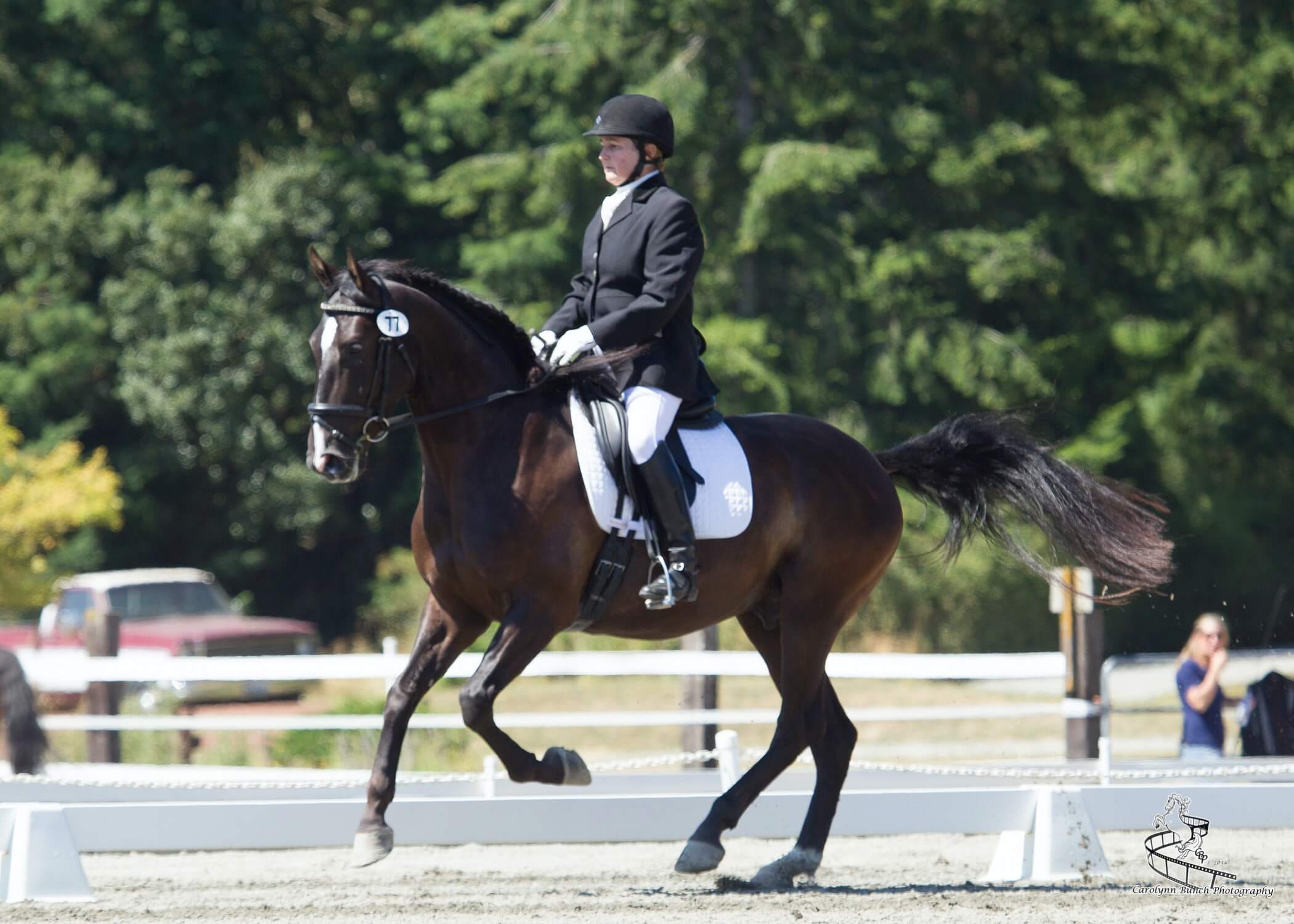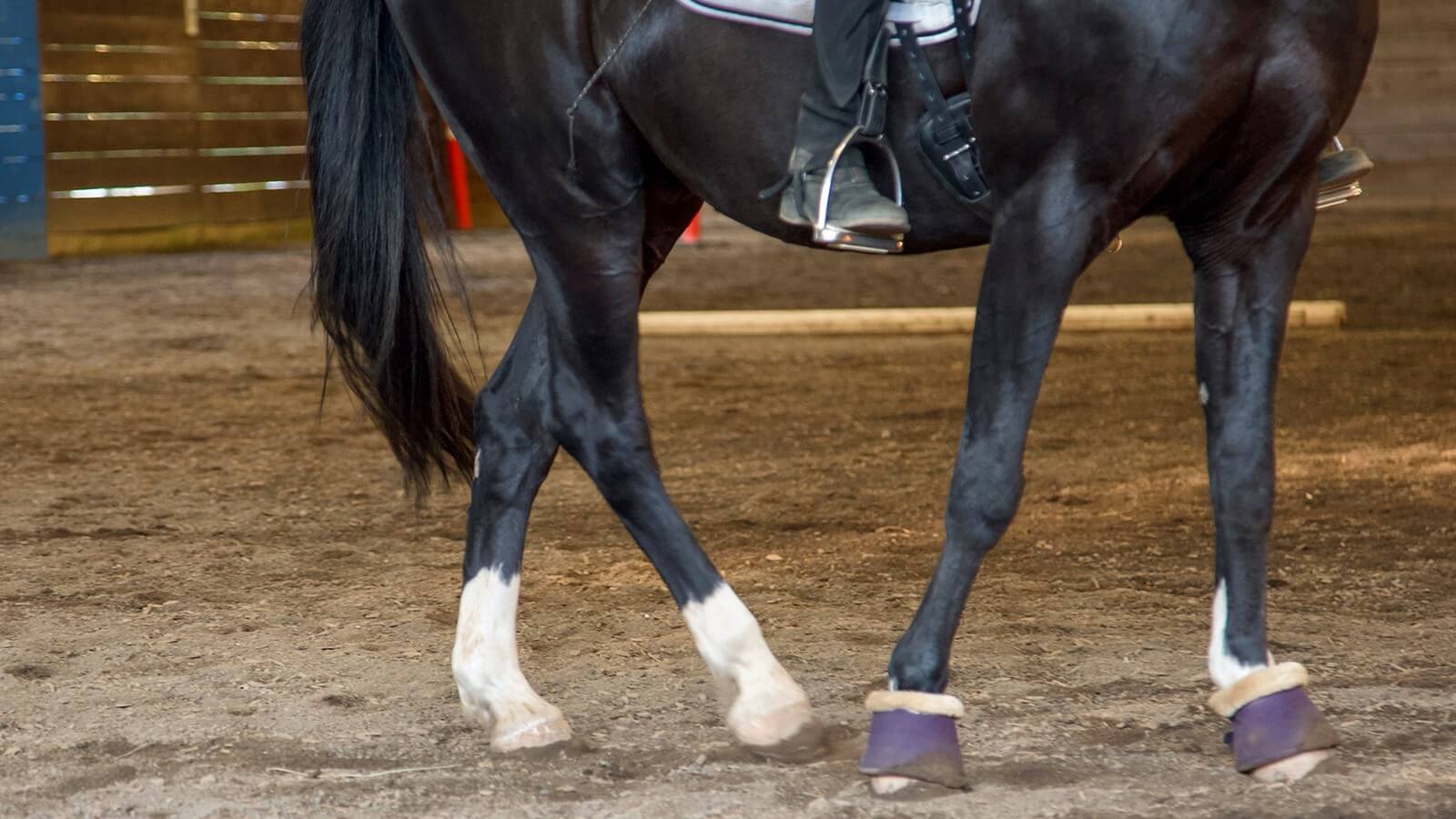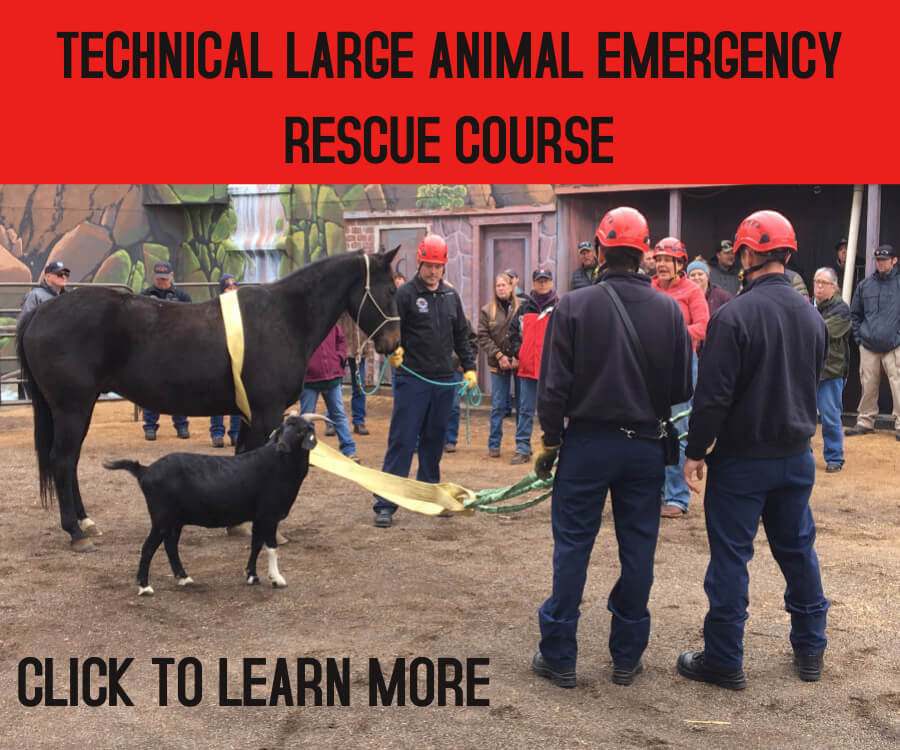One of the most basic lateral movements, the turn-on-the-forehand, maneuvers the horse’s hips around his forehand. This exercise teaches the horse to move away from the pressure of the rider’s leg, aids in control, and makes the horse more agile and supple.
The mobilization of the hips and the consequential crossing of the hind legs supples the horse’s loin as well as the muscles of the hind legs and haunches. Also, when a horse’s hind legs are crossed, his base has been narrowed, making him both easier to maneuver and less able to push against the rider. Cross your own legs and ask a friend to try and push you aside. They’ll find it very easy! So, if your horse is heavy in your hand, crossing his hind legs lightens him.
Learning to bring the hind legs laterally under a horse’s body is the beginning of their understanding engagement and collection. A horse cannot buck, bolt, or rear in the moment the hind legs are crossed.
How to Train the Turn-on-the-Forehand
Begin on the ground, standing beside the horse.
The horse must be willing to stand still beside you, relaxed, on a loose rein (or lead rope—you can train this in a halter or bridle). Throughout this article, inside refers to the side you’re moving the horse away from, and outside is the direction his hips are going.
Step 1: Create flexion in the poll to the inside, enough to see the eyelashes if you were mounted. You should see a clear bend in the poll while the neck remains mostly straight. Avoid overbending the neck.
Step 2: On the same side the horse is flexed, and at the same time, apply pressure to the horse’s side about 8 inches behind his elbow with your hand, finger, or a whip. You don’t need to apply pressure closer to the hindquarters or back by the flank as the horse should learn to yield from the same position your leg will be in when you’re mounted. A slight tapping works well. Don’t escalate the pressure as that will create anxiety. Eventually the horse will respond by yielding his hips away or maybe just leaning away from the pressure. As soon as you notice him yielding, stop tapping and praise him greatly, wait a moment, and begin again.
If, when you stop tapping the horse stops yielding, tap again; when he begins to yield, stop tapping. Soon, you will only have to point toward his belly, and he will yield and keep moving. Ask the horse to stop moving sideways by saying “whoa”. The horse shouldn’t think to stop just because you quit tapping (horses should have cruise control). You ask, he moves and keeps moving until you ask him to stop. You can add a verbal cue such as a cluck to get the horse to move his feet if he seems unresponsive.
If the horse misunderstands and walks forward from the pressure, stand more in front of him and use a slight tug on the lead rope or reins to explain you don’t want forward motion. Soon the horse will understand forward is not what you want, but sideways.
In the Saddle
Step 1: Repeat the process exactly as you did on the ground: Halt, create flexion of the poll to the inside, tap with your heel, spur, or whip. Once the horse yields stop tapping and praise.
Step 2: Train one side well before moving to the other side. It can take several sessions. Always walk forward allowing the horse to relax after a few good steps. Once the horse is yielding his hips well on both sides you can increase the number of rotations the hips make around the hindquarters. The horse should take very small steps forward with his front legs (not pivot and twist the front legs). His inside hindleg should step well in front of his outside hind. The walk rhythm should be maintained (four beats).
As your horse becomes more proficient you will notice a softening in his jaw, neck, and body as he becomes more supple. Most horses learn to enjoy this and will stretch their necks down after they do a few turns on the forehand. Let them walk forward and enjoy this stretching time.
The turn-on-the-forehand does not create bend in the body or engagement of the hindlegs, just crossing and a forward reach. Therefore, it’s not a stressful or difficult exercise for the horse’s body. Still, always take into account your horse’s health, age, and suppleness and as with all exercises slowly increase the demands and number of repetitions as your horse becomes more capable. And remember, praise often and greatly.
See this article in the July 2021 online edition:

Kim Roe grew up riding on the family ranch and competed in Western rail classes, trail horse, reining, working cow, and hunter/jumper. She trained her first horse for money at 12 years old, starting a pony for a neighbor.
Kim has been a professional dressage instructor in Washington state for over 30 years, training hundreds of horses and students through the levels. In recent years Kim has become involved in Working Equitation and is a small ‘r’ Working Equitation judge with WE United.
Kim is the editor of the Northwest Horse Source Magazine, and also a writer, photographer, and poet. She owns and manages Blue Gate Farm in Deming, Washington where she continues to be passionate about helping horses and riders in many disciplines.






